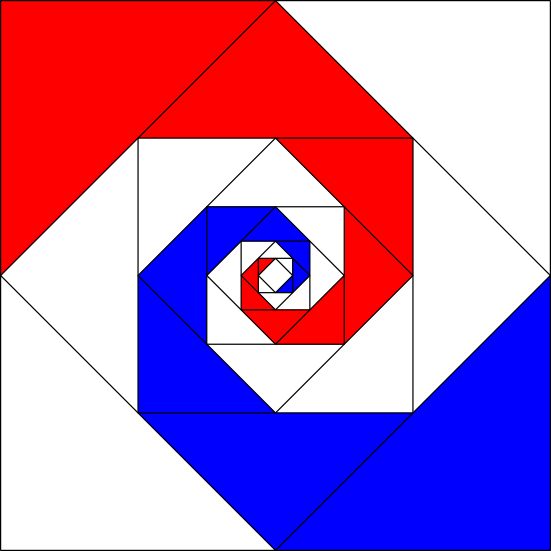Or search by topic
Number and algebra
Geometry and measure
Probability and statistics
Working mathematically
Advanced mathematics
For younger learners
Baravelle



- Problem
- Teachers' Resources
Baravelle
Look at this image for a short while before turning away.
Can you:
- Recreate the image?
- Describe the image?
- Say some mathematical things about what you notice?
- Think of some mathematical questions you would like to ask about it?
You can download a PDF of the image to look at.

Why do this problem
The aim of using this image is to encourage discussion about the different ways of seeing, and to pose questions that can form the focus of further investigation.
Possible approach
You can find a pdf with the image here. Look at the image for about a minute and then "hide it". Then share ideas.
Follow up by selecting one or two of the ideas for the group to explore further, for example:
- Recreating the image
- Finding what fraction of the whole the areas is shaded red, blue and white.
Key questions
Can you continue the pattern inwards? Outwards?
Can you give a convincing argument for the fractions of the whole that you can see?
Possible Extension
Consider summing infinite series.
What are the ratios of the lengths of the sides of the triangles?
Possible support
Can you find the fractions and or recreate the shape by folding? Some learners might like to try the problem Inside Seven Squares.
Related Collections
You may also like
Geoboards
This practical challenge invites you to investigate the different squares you can make on a square geoboard or pegboard.

